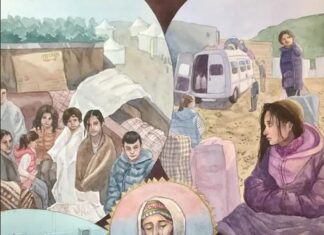By Alin Gregorian
Mirror-Spectator Staff
BELMONT, Mass. — The auditorium of the National Association for Armenian Studies and Research (NAASR) was packed on March 14 as French-Armenian historian Raymond Kevorkian spoke about his most recent book, the English translation of which, titled The Armenian Genocide: The Complete History, came out last year.
Kevorkian, the director of the AGBU Nubarian Library in Paris and a lecturer at the Institute Français de Geopolitique, University of Paris, said the focus of his book is “micro-history,” which can shed light on the bigger picture. He explained, “The goal is to get deep within detail, on the local level, to base [documenta- tion] on a strong foundation.”
The book, therefore, tracks the trail of forced marches and deaths from province to province, town to town, even specific streets.
“I wanted to see if the process is the same in every province,” he said. Research showed him that indeed, they were not the same.









